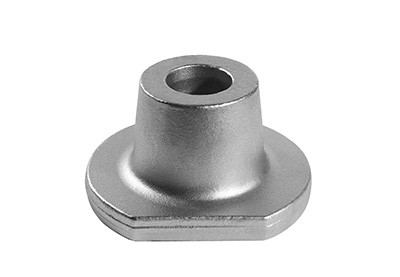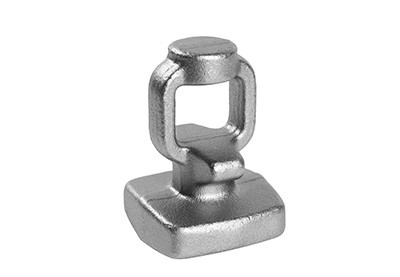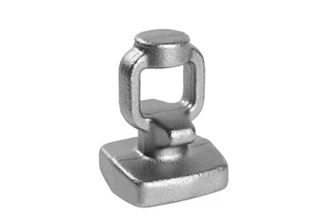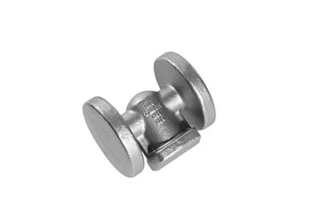Hot Die Forging.Closed die forging.ASTM.DIN.
Key Specifications / Features
Hits: 32
Hot die forging is a type of forging process technology, which generally refers to the precision forging method of heating a metal blank to a temperature higher than the recrystallization temperature of the material, and using a mold to plastic form the metal blank into the shape and size of the forging.
Request a quote
Tags
Detail Information
Forging materials:ASTM1035,ASTM1045,ASTM1021,ASTM1040,ASTM1320/20Mn2,ASTM1340/40Mn2,ASTM5120/20Cr,ASTM5140/40Cr,ASTM4119/20CrMo,ASTM4140/42CrMo,ASTM4135/35CrMo,ASTM4340/40CrNiMo,ST52-3/Q355/16Mn
Forging Method:Closed die forging,Warm forging,Roll ring forging.
OEM No:Customized
Weight:1-100KGS
Dimension:Customized
Certificates:ISO/TS16949
Heat treatment:Normalizing,Quenching and tempering
Test:Magnetic Powder Defects Test, Hardness Test, Dimension Test
Hot die forging is a type of forging process technology, which generally refers to the precision forging method of heating a metal blank to a temperature higher than the recrystallization temperature of the material, and using a mold to plastic form the metal blank into the shape and size of the forging.
As the automotive industry continues to grow, manufacturers are constantly looking for ways to improve the quality, performance, and durability of their products. One way to achieve these goals is through the use of die forging, a manufacturing process that offers many advantages for automotive components. As a professional die forging manufacturer, we will explore why die forging is an excellent choice for automotive components.
Die forging produces parts that have excellent mechanical properties, such as high strength and toughness. The process creates a tightly packed grain structure that enhances the strength and durability of the material. As a result, automotive components produced using die forging are highly resistant to wear and tear, as well as to fatigue failure.
When it comes to manufacturing metal parts, die forging has long been a popular method. However, as with any process, there are alternatives to die forging that may be better suited to certain applications. In this article, we will explore some of the alternatives to Die forging and discuss their benefits.
Die forging has long been a popular method for manufacturing metal parts, but it is not the only option. Casting, machining, stamping, and extrusion are all viable alternatives that may be better suited to certain applications. By understanding the benefits of each method, you can choose the process that will best meet their needs.
When it comes to manufacturing processes, there are a variety of techniques that can be used to produce high-quality parts and components. One such process is die forging, which is a technique that is used to create strong and durable metal parts.
Die forging is a manufacturing process that involves heating metal to a high temperature and then using a hammer or press to deform the metal into the desired shape. The process is called "die forging" because the metal is dropped into the forging machine. The metal is typically heated to a temperature of around 2200 degrees Fahrenheit, which makes it more malleable and easier to shape. Once the metal is heated, it is placed in the forging machine, and the hammer or press is used to apply pressure to the metal, shaping it into the desired form.
Forging Method:Closed die forging,Warm forging,Roll ring forging.
OEM No:Customized
Weight:1-100KGS
Dimension:Customized
Certificates:ISO/TS16949
Heat treatment:Normalizing,Quenching and tempering
Test:Magnetic Powder Defects Test, Hardness Test, Dimension Test
Hot die forging is a type of forging process technology, which generally refers to the precision forging method of heating a metal blank to a temperature higher than the recrystallization temperature of the material, and using a mold to plastic form the metal blank into the shape and size of the forging.
As the automotive industry continues to grow, manufacturers are constantly looking for ways to improve the quality, performance, and durability of their products. One way to achieve these goals is through the use of die forging, a manufacturing process that offers many advantages for automotive components. As a professional die forging manufacturer, we will explore why die forging is an excellent choice for automotive components.
Die forging produces parts that have excellent mechanical properties, such as high strength and toughness. The process creates a tightly packed grain structure that enhances the strength and durability of the material. As a result, automotive components produced using die forging are highly resistant to wear and tear, as well as to fatigue failure.
When it comes to manufacturing metal parts, die forging has long been a popular method. However, as with any process, there are alternatives to die forging that may be better suited to certain applications. In this article, we will explore some of the alternatives to Die forging and discuss their benefits.
Die forging has long been a popular method for manufacturing metal parts, but it is not the only option. Casting, machining, stamping, and extrusion are all viable alternatives that may be better suited to certain applications. By understanding the benefits of each method, you can choose the process that will best meet their needs.
When it comes to manufacturing processes, there are a variety of techniques that can be used to produce high-quality parts and components. One such process is die forging, which is a technique that is used to create strong and durable metal parts.
Die forging is a manufacturing process that involves heating metal to a high temperature and then using a hammer or press to deform the metal into the desired shape. The process is called "die forging" because the metal is dropped into the forging machine. The metal is typically heated to a temperature of around 2200 degrees Fahrenheit, which makes it more malleable and easier to shape. Once the metal is heated, it is placed in the forging machine, and the hammer or press is used to apply pressure to the metal, shaping it into the desired form.
Comment Form









